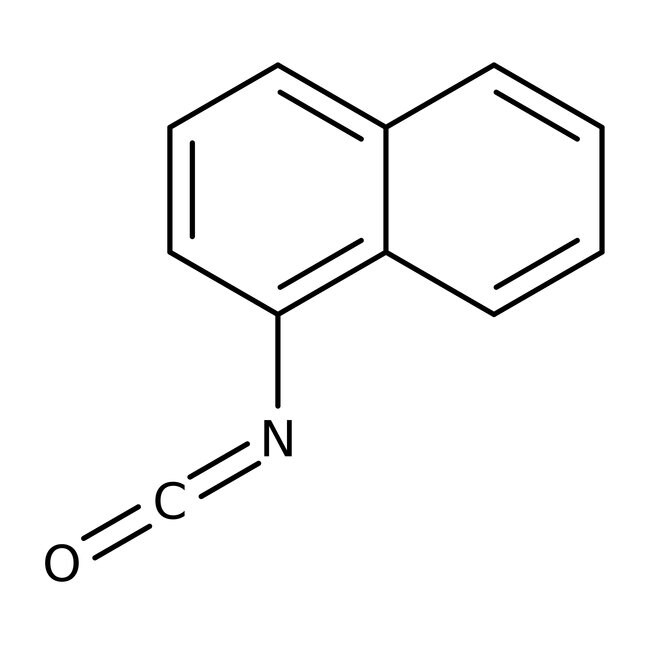Search Thermo Fisher Scientific
1-isocyanate de naphtyle, 98 %, Thermo Scientific Chemicals



1-isocyanate de naphtyle, 98 %, Thermo Scientific Chemicals
Identifiants chimiques
Spécifications
Description
This Thermo Scientific Chemicals brand product was originally part of the Alfa Aesar product portfolio. Some documentation and label information may refer to the legacy brand. The original Alfa Aesar product / item code or SKU reference has not changed as a part of the brand transition to Thermo Scientific Chemicals.
L’isocyanate de 1-naphtyle est utilisé dans la préparation de l’uréthane aromatique cationique. Il est utile pour l’étude de l’hépatotoxicité cholangiolitique chez les animaux de laboratoire. Il est également utilisé comme énantiomères distincts des bêta-bloquants.
Solubilité
Miscible avec de l’alcool, du chloroforme et de l’éther diéthylique.
Remarques
Sensible à l’humidité et à la lumière. Incompatible avec les agents oxydants forts et les alcools.
Figures
Documentation et téléchargements
Certificats
Foire aux questions (FAQ)
Citations et références
Sécurité et manipulation
Classification of the substance or mixture
CLP classification - Regulation(EC) No 1272/2008
Label Elements
Signal Word
Danger
Hazard Statements
H302 + H312 + H332 - Harmful if swallowed, in contact with skin or if inhaled
H315 - Causes skin irritation
H319 - Causes serious eye irritation
H334 - May cause allergy or asthma symptoms or breathing difficulties if inhaled
H335 - May cause respiratory irritation
Precautionary Statements
P261 - Avoid breathing dust/fume/gas/mist/vapors/spray
P280 - Wear protective gloves/protective clothing/eye protection/face protection
P301 + P312 - IF SWALLOWED: Call a POISON CENTER or doctor/physician if you feel unwell
P304 + P340 - IF INHALED: Remove person to fresh air and keep comfortable for breathing
P305 + P351 + P338 - IF IN EYES: Rinse cautiously with water for several minutes. Remove contact lenses, if present and easy to do. Continue rinsing
P261 - Avoid breathing dust/fume/gas/mist/vapors/spray
P280 - Wear protective gloves/protective clothing/eye protection/face protection
P302 + P352 - IF ON SKIN: Wash with plenty of soap and water
P304 + P340 - IF INHALED: Remove person to fresh air and keep comfortable for breathing
P342 + P311 - If experiencing respiratory symptoms: Call a POISON CENTER or doctor/physician